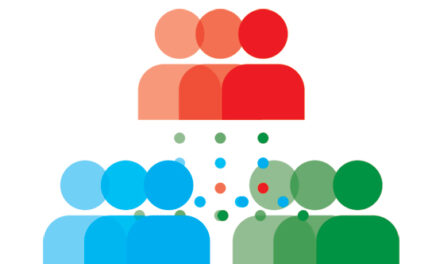Understanding how teachers’ perceptions of their work lead to stress can help leaders find solutions and support those who need it most.
Teaching is widely recognized to be a stressful occupation, characterized by numerous and varied challenges: administrative burdens, long hours, classroom management difficulties, and lack of autonomy, to name but a few. Teachers are isolated from colleagues for much of the day, spending less than 5% of their work time collaborating with peers (Scholastic & the Gates Foundation, 2012). They are also paid less than other workers with similar experience and education, a gap that has grown from 4.3% in 1996 to 17% in 2015, according to the Economic Policy Institute (Allegreto & Mishel, 2016). Further, teachers face significant social and political scrutiny as to how they do their jobs (Goldstein, 2014).
These demands take a toll, resulting in job dissatisfaction, workplace fatigue, burnout, and reduced occupational commitment. The statistics on teacher turnover are grim: Research estimates that between 19% and 30% of new teachers leave the field within the first five years of teaching, which can reduce the espirit de corps of their campus community and negatively affect student learning (Guin, 2004; Kraft & Papay, 2014). In the most recent PDK poll, half of teachers surveyed said they had considered leaving the profession within the last year, with low pay and high stress most frequently cited as the reasons (PDK International, 2019).
Of course, teacher stress is not unique to the United States. In fact, research has yielded remarkably consistent findings around the world, with roughly 20-25% of the teaching workforce reporting high levels of stress. For example, this holds true for 25% of teachers in Great Britain (Travers & Cooper, 1996) and Italy (Zurlo, Pes, & Capasso, 2013); 20-22% in Malaysia (Moy et al., 2014) and Germany (Unterbrink et al., 2007); and 25-26% in Australia (Garrick et al., 2014) and the U.S. (Lambert et al., 2015).
But if it’s clear that teacher stress is widespread, it’s not always clear how teacher stress should be defined. Traditionally, educational policy research has focused on working conditions (i.e., school administration, teacher autonomy, and collegiality with colleagues) as the main driver of occupational health (Béteille & Loeb, 2009; Ingersoll, 2001; Ladd, 2011). That is, teacher stress tends to be viewed as a result of working in a stressful environment, often characterized as lacking sufficient funding or effective leadership. However, if only 20-25% of teachers report high levels of stress, then that would suggest that the working environment itself is only part of the issue. In many schools, some teachers are stressed out while others are not; but if working conditions were all that mattered, then every teacher in the school would be equally stressed. Clearly, then, there must be more to the story.
Chris Kyriacou (2001) and others have argued that teacher stress is better understood as resulting from a mismatch between the pressures and demands made on educators and their ability to cope with those demands. Workforce conditions alone are not sufficient to explain why some teachers are highly stressed. Rather, what matters most is how each teacher sees the demands they face in relation to the resources they have available to meet those demands. Just as beauty is said to be in the eye of the beholder, stress depends on the teacher’s unique view of their classroom. And if this is true, then it should be possible to identify and intervene with teachers who are most vulnerable to stress, above and beyond efforts to improve the larger working environment.
Appraising the situation and defining teacher stress
Kyriacou’s (2001) perspective on teacher stress draws from a theory — originally proposed by Richard Lazarus and Susan Folkman (1984) — that has become the dominant model of stress among psychological researchers in general. It understands stress to result from a perceived imbalance between demands and resources, which is why it is sometimes referred to as a “balance model“ (Meurs & Perrewé, 2011).
Each of us interprets the demands placed upon us using a process Richard Lazarus (2001) calls appraisal. When facing potential challenges, threats, and obstacles in our environment, our first response (or “primary appraisal” of the situation) is to ask ourselves, “What is this, and what significance does it hold for my well-being?” Second, we consider our available resources, asking ourselves, “What can I do about it?” How we weigh these demands and resources determines whether our brain signals to the rest of the body that a threat is at hand, triggering the stress response.
In short, the process of appraisal combines a dose of objective reality with individual interpretation, both a realistic evaluation of the challenges we face and a subjective effort to put the best possible light on the situation and the resources at hand, so that we feel that we are able to cope. This may, in part, explain why some teachers are more vulnerable to stress in their classroom, even compared to neighboring teachers working in the same school with the same types of students. One teacher’s interpretation of
the situation may be different from the other’s; one may see classroom demands as exceeding their available resources, while the other believes their resources (helpful colleagues and parents, say) are sufficient to meet classroom demands.
Of course, on any given day, a teacher might experience some occasions when demands exceed resources and others where the resources meet the demands. Yet, research suggests that it is our overall appraisal that makes the difference: Teachers who chronically find themselves on the losing end of the demand/resource equation are the most vulnerable to stress and most at risk for lowered job satisfaction, greater burnout, and lowered occupational commitment (Lambert et al., 2015).
Assessing which teachers are appraising an imbalance of demands versus resources is a unique challenge given that it requires comparing units of demands to units of resources to determine when an imbalance exists — without such a system, this part of the transactional model could not be tested (Hobfoll, Schwarzer, & Chon, 1998). To address this challenge, my colleagues and I developed a survey of teachers’ classroom working conditions called the Classroom Appraisal of Demands and Resources (CARD; Lambert et al., 2009). The CARD assesses both parts of the appraisal process hypothesized by Lazarus and Folkman (1984): Classroom Demands (primary appraisal) and Classroom Resources (secondary appraisal).
The CARD Demands scale consists of 35 items asking teachers to rate how demanding various aspects of the classroom environment are on a scale of 1 (not at all demanding) to 5 (extremely demanding). As we developed the measure over the past decade, we drew the specific items from aspects of the classroom environment found most frequently to contribute to teacher stress in the literature. For instance, teachers tend to report that the management of student behavior tops their list of stressors (Lewis, Roache, & Romi, 2011). Not that this should lead us to “blame” students for teacher stress; nor is it to downplay stressors related to administrators’ behaviors, shortages of instructional supplies, time pressures, testing, and so on. Rather, the point is simply to acknowledge that everyday classroom interactions — students joking with each other, talking back, dozing off, tipping over their chairs, and so on — create intense and immediate demands on teachers. The CARD Demands scale also assesses other frequent demands for teachers, including administrative demands and lack of needed instructional supplies.
The CARD Classroom Resources scale addresses the other side of the appraisal process: What resources can teachers draw upon to meet these demands? This scale includes 30 items measuring the helpfulness of school-provided resources on a scale of 1 (very unhelpful) to 5 (very helpful). Many of the Resource items focus on the helpfulness of other people. Teachers often report that they rely on other people to help them, including school personnel such as administrators, school counselors, school psychologists, teaching aides, and other educational specialists, as well as other adults in the community, such as parent volunteers and mentors. Depending on how helpful these people appear to be in meeting classroom demands, teachers will view some of them as highly valuable resources, others as not valuable at all. The less helpful those people appear to be in responding to the challenges of student misbehavior, for example, the more stress the teacher is likely to feel. This scale also includes measures of the availability of instructional resources.
Measuring Demands and Resources is not sufficient to capture the central theoretical premise that stress results when demands are appraised as exceeding resources (Hobfoll, Schwarzer, & Chon, 1998). To determine this, we calculate the difference between teachers’ Demands and Resources scales. Using the scores of the nearly 1,000 elementary teachers have taken the CARD, we are able to group teachers into three categories: (a) Resourced teachers who generally appraise their classroom resources as exceeding their classroom demands, (b) Balanced teachers who generally appraise their classroom demands and resources as equal, and (c) Demanded teachers who consistently appraise their demands as exceeding their resources. This last group of teachers are likely among those 25% who are most at risk for stress. Research across 18 studies using the CARD has demonstrated that Demanded teachers indeed experience symptoms of stress, including reduced job satisfaction, more burnout, and lowered occupational commitment (McCarthy et al., 2016).
- Podcast with Christopher Jay McCarthy on Research Minutes
Coping and stress interventions for teachers
When teachers judge that the demands of their job outweigh their resources, they experience stress. But that’s only part of the story — equally important is how they cope with that stress. (Coping is defined as any cognitive, emotional, or behavioral effort to address a potentially harmful stressor; Folkman & Lazarus, 1988).
Psychologists typically distinguish between two main types of coping strategies. First is problem-focused coping, which aims to change the stressful situation. For example, a teacher might use classroom management techniques to address a student’s behavior, or might ask an administrator to intervene with the student’s parents. Generally speaking, this strategy is most useful when there’s real potential to change the situation.
Second is emotion-focused coping, which aims to manage the emotions that go along with stress, such as worry and frustration. For example, this might include taking a few deep breaths to calm down before calling an upset parent, or attending a yoga class to recharge after a long day of staff meetings — these strategies become particularly important when we know we cannot change the situation.
All teachers can benefit from interventions designed to cope with stress. Most urgently needed, however, are efforts to support those teachers who appraise themselves as chronically over-demanded and under-resourced — i.e., what my colleagues and I call Demanded teachers, or the 20-25% of teachers who are most at risk of experiencing high levels of stress. What can be done to identify those teachers and help them cope?
Identifying teachers at risk
A number of psychological assessments are available for school leaders seeking to understand which teachers might be most vulnerable to stress, including the CARD measure (Lambert et al., 2009). The Perceived Stress measure, which can be completed in a few minutes, is widely used, both in and outside of education, to assess the degree to which life situations are appraised as stressful (Cohen, Kamarck, & Mermelstein, 1983). Also, given that burnout occurs at significant rates among educators, a version of the Maslach Burnout Inventory was developed specifically for them (MBI-Educators Survey; Maslach, Jackson, & Schwab, 1996).
Administrators can also use informal check-ins and peer mentors to keep in touch with their teaching staff and identify which teachers are experiencing the highest levels of stress. However, when using informal assessments rather than standardized measures, it’s important to keep in mind that the objective indicators of the demands teachers face (e.g., class size, the number of classes taught, their financial need to work a second job) do not tell the whole story — the real question is whether teachers subjectively perceive their resources to be sufficient to help them meet those demands.
Structural interventions
The old maxim that prevention is the best medicine can be important for schools wanting to reduce stress among teachers. Just as many corporations provide wellness centers for their employees, schools could address the needs of their teachers holistically by including comprehensive wellness programming in every school. School leaders might even borrow from the public health field by putting in place “upstream” interventions that focus on prevention for the entire population, as opposed to treating problems reactively (Lorenc et al., 2013). Lowering the overall demand level in a school would likely lift many teachers out of the Demanded category.
Rather than waiting for Demanded teachers to experience stress, burnout, and reduced job satisfaction, proactive strategies can be used to carefully tailor teachers’ capabilities to their class assignments. Such upstream interventions could be particularly important for novice teachers, who are sometimes viewed as brimming with enthusiasm and energy and ready to take on any challenge. However, new teachers appear to be vulnerable to high stress at about the same 25% rate as more experienced teachers (McCarthy et al., 2019). Schools often have formal or informal policies that provide experienced teachers with the highest-performing students (Grissom, Kalogrides, & Loeb, 2015), while newer teachers are assigned to students who are most challenging to teach. Rather than offering this trial-by-fire approach, school leaders might want to make sure newer teachers, especially, receive as many structural supports as possible, including mentoring by experienced faculty mentors, release time for professional learning, and classroom assignments that set them up for success. Perhaps most important of all, though, is for administrators to be attentive to how demands (e.g., classes and students) are apportioned.
Accountability standards have significantly reduced the flexibility and autonomy of teachers in U.S. schools (Ingersoll, 2009), and teachers’ time and methods are often micromanaged (Hargreaves, 1994). These practices fly in the face of research that shows that teachers experience less stress and job dissatisfaction as their autonomy increases (Pearson & Moomaw, 2005; Tuettemann & Punch, 1992). Therefore, another way to reduce stress for Demanded teachers, particularly those with more classroom experience, is by offering them increased autonomy over their classroom. Allowing teachers to manage the day-to-day functioning of their classrooms and perhaps even participate in decision making for their school can not only reduce stress, it also comes at little financial cost. Moreover, under such conditions, teachers can come to see administrators as allies rather than bosses.
Psychological interventions
Aside from structural changes, a number of more targeted psychological interventions could be important for minimizing the number of Demanded teachers on campus. These include mind-body interventions that focus “on the interactions among the brain, mind, body, and behavior, and the powerful ways in which emotional, mental, social, spiritual, and behavioral factors can directly affect health” (National Institutes of Health, 2013). Counselors, psychologists, and social workers with expertise in meditation and other techniques can be employed to deliver such interventions for teachers. For example, a group of graduate students working with me at the University of Texas offer small groups and psychoeducational workshops designed to help teachers understand the causes of stress and mind-body techniques they can use to promote wellness. We find the use of small groups, conducted in the schools, particularly helpful in providing a space for teachers to support each other and overcome the professional isolation they sometimes experience (Eyal et al., 2019).
Recognizing and supporting vulnerable teachers
Teacher stress is documented across the globe. It takes a measurable toll on the teaching workforce, as many teachers become burned out and decide to leave the profession. Recognizing that stress is a psychological process that results from how teachers appraise their own classroom context may provide avenues for intervention for those 20-25% of teachers most vulnerable to stress. Such interventions include upstream structural efforts to calibrate demands across the school campus to better suit each teacher’s capacity and more targeted interventions aimed at teachers who are most Demanded. Both types of interventions together will likely assist not just the teachers most at risk for stress, but teachers throughout the school, as a workforce that is more stable and satisfied will create a more pleasant and effective working environment for everyone.
References
Allegreto, S. & Mishel, L. (2016, August). The teacher pay gap is wider than ever. Washington, DC: Economic Policy Institute.
Béteille, T. & Loeb, S. (2009). Teacher quality and teacher labor markets. In G. Sykes, B. Schneider, D.N. Plank, & T.G. Ford (Eds.), Handbook on education policy research (pp. 596-612). New York, NY: American Educational Research Association.
Cohen, S., Kamarck, T., & Mermelstein, R. (1983). A global measure of perceived stress. Journal of Health and Social Behavior, 24, 386-396.
Eyal, M., Bauer, T., Playfair, E., & McCarthy, C.J. (2019). Mind-body group for teacher stress: A trauma-Informed intervention program. Journal for Specialists in Group Work, 44 (3), 204-221.
Folkman, S. & Lazarus, R.S. (1988). Coping as a mediator of emotion. Journal of Personality and Social Psychology, 54, 466-475.
Garrick, A., Winwood, P.C., Mak, A.S., Cathcart, S., Bakker, A.B., & Lushington, K. (2014). Prevalence and organisational factors of psychological injury among Australian school teachers. Australasian Journal of Organisational Psychology, 7.
Goldstein, D. (2014). The teacher wars: A history of America’s most embattled profession. New York, NY: Doubleday.
Grissom, J.A., Kalogrides, D., & Loeb, S. (2015). The micropolitics of educational inequality: The case of teacher-student assignments. Peabody Journal of Education, 90 (5), 601-614.
Guin, K. (2004). Chronic teacher turnover in urban elementary schools. Education Policy Analysis Archives, 42 (12), 1-30.
Hargreaves, A. (1994). Changing teachers, changing times: Teachers’ work and culture in the postmodern age. London, UK: Cassell.
Hobfoll, S.E., Schwarzer, R., & Chon, K.K. (1998). Disentangling the stress labyrinth: Interpreting the meaning of the stress as it is studied in the health context. Anxiety, Stress, and Coping, 11, 181-212.
Ingersoll, R.M. (2001). Teacher turnover and teacher shortages: An organizational analysis. American Educational Research Journal, 38 (3), 499-534.
Ingersoll, R.M. (2009). Who controls teachers’ work: Power and accountability in America’s schools. Cambridge, MA: Harvard University Press.
Kraft, M.A. & Papay, J.P. (2014). Can professional environments in schools promote teacher development? Explaining heterogeneity in returns to teaching experience. Educational Effectiveness and Policy Analysis, 36 (4), 476-500.
Kyriacou, C. (2001). Teacher stress: Directions for future research. Educational Review, 53 (1), 27–35.
Ladd, H.F. (2011). Teachers’ perceptions of their working conditions: How predictive of planned and actual teacher movement? Educational Evaluation and Policy Analysis, 33 (2), 235-261.
Lambert, R.G., McCarthy, C.J., Fitchett, P.G., Lineback, S., & Reiser, J. (2015). Identification of elementary teachers’ risk for stress and vocational concerns using the national Schools and Staffing Survey.
Education Policy Analysis Archives, 23 (43).
Lambert, R.G., McCarthy, C., O’Donnell, M., & Wang, C. (2009). Measuring elementary teacher stress and coping in the classroom: Validity evidence for the classroom appraisal of resources and demands. Psychology in the Schools, 46 (10), 973-988.
Lazarus, R. (2001). Relational meaning and discrete emotions. In K.R. Scherer, A. Schorr, & T. Johnstone (Eds.), Appraisal processes in emotion: Theory, methods, research. Series in affective science (pp. 37-67). New York, NY: Oxford University Press.
Lazarus, R.S. & Folkman, S. (1984). Stress, appraisal, and coping. New York, NY: Springer.
Lewis, R., Roache, J., & Romi, S. (2011). Coping styles as mediators of teachers’ classroom management techniques. Research In Education, 85, 53-68.
Lorenc, T., Petticrew, M., Welch, V., & Tugwell, P. (2013). What types of interventions generate inequalities? Evidence from systematic reviews. Journal of Epidemiology and Community Health, 67 (2), 190-193.
Maslach, C., Jackson, S.E., & Schwab, R.L. (1996). Maslach Burnout Inventory-Educators Survey (MBI-ES). In C. Maslach, S.E. Jackson, & M.P. Leiter (Eds.), Maslach Burnout Inventory manual (3rd ed.). Palo Alto, CA: Consulting Psychologists Press.
McCarthy, C.J., Fitchett, P.G., Lambert, R.G., & Boyle, L. (2019). Stress vulnerability in the first year of teaching. Teaching Education.
McCarthy, C., Lambert, R., Lineback, S., Fitchett, P., & Baddouh, P. (2016). Assessing teacher appraisals and stress in the classroom: Review of the classroom appraisal of resources and demands. Educational Psychology Review, 28 (3), 577-603.
Meurs, J.A. & Perrewé, P.L. (2011). Cognitive activation theory of stress: An integrative theoretical approach to work stress. Journal of Management, 37 (4), 1043-1068.
Moy, F.M., Hoe, V.C.W., Hairi, N.N., Buckley, B., Wark, P.A., Koh, D., & Bulgiba, A.M. (2014). Cohort study on clustering of lifestyle risk factors and understanding its association with stress on health and wellbeing among school teachers in Malaysia (CLUSTer) — a study protocol. BMC Public Health, 14 (1), 918-936.
National Institutes of Health. (2013, March). Mind-body medicine practices in complementary and alternative medicine. Bethesda, MD: Author.
PDK International. (2019). Frustration in the schools: PDK Poll of the Public’s Attitudes Toward the Public Schools. Arlington, VA: Author.
Pearson, L.C. & Moomaw, W. (2005). The relationship between teacher autonomy and stress, work satisfaction, empowerment, and professionalism. Educational Research Quarterly, 29 (1), 38-54.
Scholastic & the Bill & Melinda Gates Foundation (2012, May). Primary sources: 2012. America’s teachers on the teaching profession. New York, NY: Scholastic.
Travers, C.J. & Cooper, C.L. (1996). Teachers under pressure: Stress in the teaching profession. New York, NY: Routledge.
Tuettemann, E. & Punch, K.F. (1992). Teachers’ psychological distress: The ameliorating effects of control over the work environment. Educational Review, 44 (2), 181-194.
Unterbrink, T., Hack, A., Pfeifer, R., Buhl-Grießhaber, V., Müller, U., Wesche, H., . . . Bauer, J. (2007). Burnout and effort–reward-imbalance in a sample of 949 German teachers. International Archives of Occupational and Environmental Health, 80 (5), 433-441.
Zurlo, M.C., Pes, D., & Capasso, R. (2013). Teacher stress questionnaire: Validity and reliability study in Italy. Psychological Reports: Measures and Statistics, 113 (2), 490-517.
Citation: McCarthy, C.J. (2019, Oct. 28). Teacher stress: Balancing demands and resources. Phi Delta Kappan, 101 (3), 8-14.
ABOUT THE AUTHOR

Christopher J. McCarthy
CHRISTOPHER J. McCARTHY is a professor of educational psychology at the University of Texas at Austin. He is the co-editor of Research on Stress and Coping in K-12 Education: Implications for the COVID-19 Pandemic and Beyond .










